INDIAN ARMED FORCES CHIEFS ON OUR RELENTLESS AND FOCUSED PUBLISHING EFFORTS

SP Guide Publications puts forth a well compiled articulation of issues, pursuits and accomplishments of the Indian Army, over the years

"Over the past 60 years, the growth of SP Guide Publications has mirrored the rising stature of Indian Navy. Its well-researched and informative magazines on Defence and Aerospace sector have served to shape an educated opinion of our military personnel, policy makers and the public alike. I wish SP's Publication team continued success, fair winds and following seas in all future endeavour!"

Since, its inception in 1964, SP Guide Publications has consistently demonstrated commitment to high-quality journalism in the aerospace and defence sectors, earning a well-deserved reputation as Asia's largest media house in this domain. I wish SP Guide Publications continued success in its pursuit of excellence.
Tejas Inducted, Finally
Indian Air Force’s first squadron of home-grown light combat aircraft Tejas became a reality with the induction of two aircraft into the force on July 1, 2016
 |
By Air Marshal B.K. Pandey (Retd) Former Air Officer Commanding-in-Chief of Training Command, IAF |
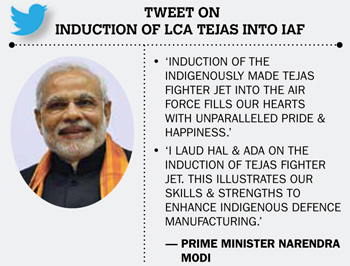
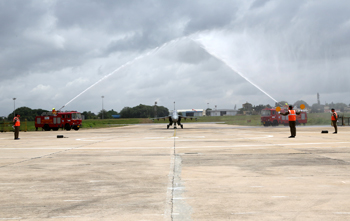
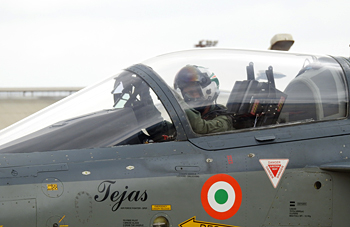
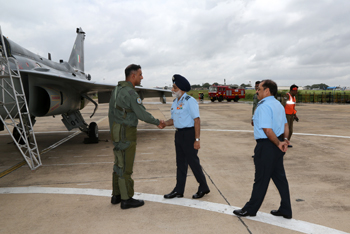
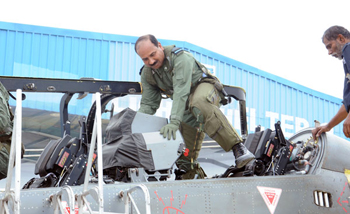
After a wait of over three decades, on Friday, July 1, 2016, the Indian Air Force (IAF) was finally handed over by the Hindustan Aeronautics Limited (HAL) two light combat aircraft (LCA) Tejas Mk I in the initial operational clearance (IOC) configuration to raise the first squadron of this type. This new squadron has been christened by the IAF as the ‘Flying Daggers 45.’
The induction ceremony was held at the Aircraft Systems & Test Establishment at the HAL airport in Bengaluru in the presence of Air Marshal Jasbir Walia, Air Officer Commanding-in Chief, Southern Air Command. The Flying Daggers 45 will be based in Bengaluru for the first two years after which it will be relocated at Air Force Station Sulur near Coimbatore in Tamil Nadu.
The Tejas is a single-engine, lightweight, highly agile, multirole supersonic combat aircraft, reported to be the smallest in its category in the world. Conceived as a MiG-21 replacement, the aircraft has been designed and developed by Aeronautical Development Agency (ADA) and produced by the Hindustan Aeronautics Limited (HAL). It is to the credit of its designers, manufacturer, technicians and test crew, that LCA has flown more than 3,000 sorties/2,000 hours till date without any accident. Capable of achieving a speed of up to Mach 1.6, the platform that has a ‘Tail-less Delta’ plan form with shoulder-mounted wings has been developed as a single-seat fighter aircraft and also has a two-seat trainer version. The aircraft is fitted with Martin Baker zero-zero ejection seats. The airframe is crafted with lightweight materials, including aluminium, lithium and titanium alloys as well as carbon composites. The ribs in the wing structure is made of composites with a carbon fibre-reinforced plastic skin. In respect of its speed, acceleration, manoeuvrability and agility, the design features of the LCA Tejas have been configured to meet with the challenges of modern aerial combat in future warfare scenarios. HAL is currently working on the establishment of facilities to scale up production initially to eight aircraft per year and then progressively raising the annual output to 16.
As per the existing plan, the IAF will induct a total of 120 LCA Tejas, the first 40 of the Mk I and the remaining 80 of the significantly improved version, the Mk IA. Of the initial order of 40 aircraft, the first 20 will be inducted in the IOC configuration and the next batch of 20 will be with final operational clearance (FOC) that will have some new features and marginally improved capabilities. The Mk IA, the upgraded version of Tejas, will be equipped with Active Electrically Scanned Array (AESA) radar, unified electronic warfare suite, midair refuelling capability and the capability to carry advanced beyond visual range (BVR) missile.

As for its other notable attributes, the Tejas incorporates state-of-the-art technologies such as a quadruplex fly-by-wire digital flight control system, advanced digital cockpit, multimode radar, integrated digital avionics system and night vision compatible glass cockpit. Its navigation suite includes Sagem SIGMA 95N ring laser gyroscope inertial navigation system with an integrated global positioning system. The pilot has the facility of helmet-mounted display and sight (HMDS) while the hands-on throttle and stick (HOTAS) control system minimises pilot workload and maximises situational awareness. The aircraft’s electronic warfare suite has been developed by the Bengaluru-based Advanced Systems Integration and Evaluation Organisation (ASIEO) and includes a radar warning receiver, jammer, devices for laser and missile approach warning as also and chaff and flare dispenser.
The aircraft has eight external hard points for the carriage of weapon load and drop tanks. These are located three under each wing, one on the centre fuselage and one installed under the air intake on the port side. A 23mm twin-barrel GSh-23 gun is installed in a blister fairing under the starboard air intake. The aircraft can be armed with air-to-air, air-to-ground and anti-ship missiles, precision-guided munitions, rockets and bombs. These aircraft are also capable of dropping unguided bombs with much higher accuracy due to highly advanced indigenous mission computer. Electronic warfare, targeting, surveillance, reconnaissance or training pods can be carried on the hard points.
While commissioning of the Flying Daggers 45 will go down in the history of the IAF as a milestone to be cherished, the LCA Tejas has still a long way to go. It is indeed heartening that of the 50-odd deficiencies observed initially, most have been cleared and the remaining too should be resolved with the Mk IA. Hopefully, this success will inspire the Indian aerospace industry to move forward and achieve greater heights of glory with the Tejas Mk II and subsequently with the fifth-generation combat platform that is on the drawing board!





